 W
WLake Erie is the fourth-largest lake of the five Great Lakes in North America, and the eleventh-largest globally if measured in terms of surface area. It is the southernmost, shallowest, and smallest by volume of the Great Lakes and therefore also has the shortest average water residence time. At its deepest point Lake Erie is 210 feet deep.
 W
WLake Huron is one of the five Great Lakes of North America. Hydrologically, it comprises the easterly portion of Lake Michigan–Huron, having the same surface elevation as its westerly counterpart, to which it is connected by the 5-mile-wide (8.0 km), 20-fathom-deep Straits of Mackinac. It is shared on the north and east by the Canadian province of Ontario and on the south and west by the state of Michigan in the United States. The name of the lake is derived from early French explorers who named it for the Huron people inhabiting the region. The Huronian glaciation was named due to evidence collected from Lake Huron region. The northern parts of the lake include the North Channel and Georgian Bay. Across the lake to the southwest is Saginaw Bay. The main inlet is the St. Marys River, and the main outlet is the St. Clair River.
 W
WLake Michigan is one of the five Great Lakes of North America. It is the second-largest of the Great Lakes by volume and the third-largest by surface area, after Lake Superior and Lake Huron. To the east, its basin is conjoined with that of Lake Huron through the narrow Straits of Mackinac, giving it the same surface elevation as its easterly counterpart; the two are technically a single lake.
 W
WLake Ontario is one of the five Great Lakes of North America. It is surrounded on the north, west, and southwest by the Canadian province of Ontario, and on the south and east by the American state of New York, whose water boundaries meet in the middle of the lake. Ontario, Canada's most populous province, was named for the lake.
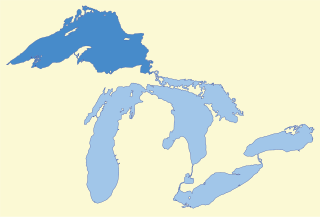 W
WLake Superior is the largest of the Great Lakes of North America, the world's largest freshwater lake by surface area, and the third largest freshwater lake by volume. It is shared by the Canadian province of Ontario to the north, the U.S. state of Minnesota to the west, and Wisconsin and the Upper Peninsula of Michigan to the south. Superior is the farthest north and west of the Great Lakes chain, and the highest in elevation, draining through the St. Mary's River into Lake Huron.
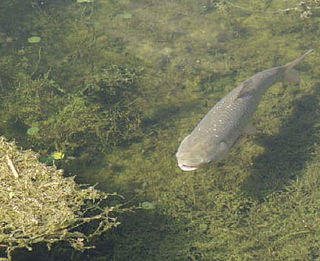 W
WIntroduced Asian carp in North America pose a major threat to the ecology, environment, economy, and way of life in the Upper Midwest and Great Lakes region of the United States and Canada. Asian carp are a group of fish species, which include several known to be invasive, and represent the most urgent potential danger to the ecology of the Great Lakes. The United States Department of the Interior and United States Fish and Wildlife Service presented their first annual report to Congress on the issue in December 2014.
 W
WBay Shipbuilding Company (BSC) is a shipyard and dry dock company in Sturgeon Bay, Door County, Wisconsin. As of 2015, Bay Ships was a subsidiary of Fincantieri Marine Group and produces articulated tug and barges, OPA-90 compliant double hull tank ships and offshore support vessels. It also provides repair services to the lake freighter fleet. In the past the shipyard located in Sturgeon Bay has operated under several different names and traces its history back to 1918. The company also built 40,000 ton Lake freighters in the 1970s and 1980s. While capable of producing large freighters, the yard has not built a freighter over 20,000 tons since 1987. Former names of the shipyards at the 2015 location of Bay Shipbuilding are: Sturgeon Bay Shipbuilding, Leathem D. Smith Shipbuilding Company and Christy Corporation.
 W
WThe Buffalo Niagara Region is an economic region that is part of the Great Lakes region of North America, comprising much of Western New York in the United States. The Regional Institute of the University at Buffalo has defined the region as including the eight westernmost counties in New York.
 W
WCharlotina was the suggested name for a popularly proposed British crown colony which was to be established in America following the end of the Seven Years' War, in which Great Britain had acquired a large portion of New France in 1763. However, the proposal was met with little official enthusiasm, as the British government's Royal Proclamation of 1763 forbade the creation of new colonies in the Mississippi and Ohio Valleys. Had such a colony been founded, it would have included the region lying west of the Maumee and Wabash rivers; north of the Ohio River; east of the upper Mississippi River; and south of the Great Lakes. These boundaries would include portions of modern-day Minnesota, Ohio, Indiana, and the entirety of Michigan, Illinois, and Wisconsin. Charlotina would have included modern-day cities such as Chicago, Milwaukee, Toledo, Detroit, Fort Wayne, and parts of Minneapolis and St. Paul.
 W
WThe Chicago Portage was an ancient portage that connected the Great Lakes waterway system with the Mississippi River waterway system. Connecting these two great water trails of the past meant easy access from the mouth of the St Lawrence River to the Rocky Mountains, and the Gulf of Mexico. It had been used by local peoples for thousands of years during the Pre-Columbian era for travel and trade.
 W
WThe East North Central states form one of the nine geographic subdivisions within the United States which are officially recognized by the United States Census Bureau. These states are near the Great Lakes.
 W
WThe Great Lakes, also called the Great Lakes of North America, are a series of large interconnected freshwater lakes in the upper mid-east region of North America that connect to the Atlantic Ocean through the Saint Lawrence River. In general, they are on or near the Canada–United States border. They are lakes Superior, Michigan, Huron, Erie, and Ontario. Hydrologically, there are only four lakes, because lakes Michigan and Huron join at the Straits of Mackinac. The Great Lakes Waterway enables travel by water between the lakes.
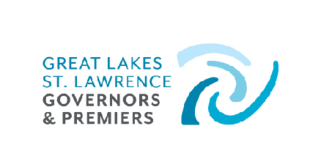 W
WThe Conference of Great Lakes and St. Lawrence Governors and Premiers is a North American organization led by the government chief executives from the Canadian provinces of Ontario and Québec and the US states of Illinois, Indiana, Michigan, Minnesota, New York, Ohio, Pennsylvania, and Wisconsin. Through the organization, they seek to grow the region's economy and protect the Great Lakes. The organization began in the 1980s as the Council of Great Lakes Governors to encourage and facilitate environmentally responsible economic development. The Council now serves as secretariat to the Governors’ Compact Council and the Governor and Premiers’ Regional Body.
 W
WGreat Lakes Areas of Concern are designated geographic areas within the Great Lakes Basin that show severe environmental degradation. There are a total of 43 areas of concern within the Great Lakes, 26 being in the United States, 17 in Canada, with five shared by the two countries.
 W
WThe Great Lakes Basin consists of the Great Lakes and the surrounding lands of the states of Illinois, Indiana, Michigan, Minnesota, New York, Ohio, Pennsylvania, and Wisconsin in the United States, and the province of Ontario in Canada, whose direct surface runoff and watersheds form a large drainage basin that feeds into the lakes. It is generally considered to also include a small area around and beyond Wolfe Island, Ontario, at the east end of Lake Ontario, which does not directly drain into the Great Lakes, but into the Saint Lawrence River.
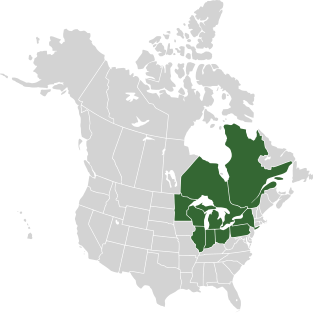 W
WThe Great Lakes Charter is a good-faith agreement among the Governors of the U.S. states of Illinois, Indiana, Michigan, Minnesota, New York, Ohio, Pennsylvania and Wisconsin, and the Premiers of the Canadian provinces of Ontario and Quebec. The charter outlines a series of principles to collectively manage the use of the Great Lakes Basin's water supply. It also includes a notice and consultation process for proposals to divert large amounts of water out of the Basin and for large in-Basin uses. It was signed on February 11, 1985.
 W
WThe Great Lakes Commission is a United States interstate agency established in 1955 through the Great Lakes Basin Compact, in order to "promote the orderly, integrated and comprehensive development, use and conservation of the water resources of the Great Lakes Basin," which includes the Saint Lawrence River. The Great Lakes Commission provides policy development, coordination, and advocacy on issues of regional concern, as well as communication and research services.
 W
WThe Great Lakes–St. Lawrence River Basin Water Resources Compact is a legally binding interstate compact among the U.S. states of Illinois, Indiana, Michigan, Minnesota, New York, Ohio, Pennsylvania and Wisconsin. The compact details how the states manage the use of the Great Lakes Basin's water supply and builds on the 1985 Great Lakes Charter and its 2001 Annex. The compact is the means by which the states implement the governors' commitments under the Great Lakes–St. Lawrence River Basin Sustainable Water Resources Agreement that also includes the Premiers of Ontario and Quebec.
 W
WThe Great Lakes Environmental Research Laboratory (GLERL) is a laboratory in the National Oceanic and Atmospheric Administration (NOAA) Office of Oceanic and Atmospheric Research (OAR). It is headquartered in Ann Arbor, Michigan, with a subsidiary field station in Muskegon, Michigan.
 W
WThe Great Lakes Group (GLG) is an American full-service marine-related transportation company headquartered in Cleveland, Ohio. The Great Lakes Group is the parent Company to The Great Lakes Towing Company, Great Lakes Shipyard, Tugz International L.L.C., Puerto Rico Towing & Barge Co., Soo Linehandling Services, Admiral Towing and Barge Company, and Wind Logistics, Inc.
 W
WThe Great Lakes Patrol was carried out by American naval forces, beginning in 1844, mainly to suppress criminal activity and to protect the maritime border with Canada. A small force of United States Navy, Coast Guard, and Revenue Service ships served in the Great Lakes throughout these operations. Through the decades, they were involved in several incidents with pirates and rebels.
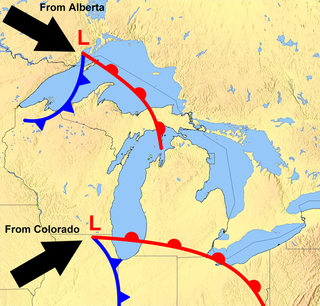 W
WThe Great Lakes Storm of 1913, historically referred to as the "Big Blow," the "Freshwater Fury," or the "White Hurricane," was a blizzard with hurricane-force winds that devastated the Great Lakes Basin in the Midwestern United States and Ontario, Canada from November 7 through November 10, 1913. The storm was most powerful on November 9, battering and overturning ships on four of the five Great Lakes, particularly Lake Huron. Deceptive lulls in the storm and the slow pace of weather reports contributed to the storm's destructiveness.
 W
WThe Great Lakes–Saint Lawrence River Basin Sustainable Water Resources Agreement is a good-faith agreement among the Governors of the U.S. states of Illinois, Indiana, Michigan, Minnesota, New York, Ohio, Pennsylvania and Wisconsin, and the Premiers of the Canadian provinces of Ontario and Quebec. The agreement details how the States and Provinces will manage the use of the Great Lakes Basin's water supply and builds on the 1985 Great Lakes Charter and its 2001 Annex. It was signed on December 13, 2005.
 W
WThe Great Recycling and Northern Development (GRAND) Canal of North America or GCNA is a water management proposal designed by Newfoundland engineer and visionary Thomas Kierans to alleviate North American freshwater shortage problems. It proposed damming James Bay, using the techniques of the Zuiderzee/IJsselmeer, to prevent its waters mixing with the salt water of Hudson Bay to the north. This would produce an enormous freshwater lake, some of which would be pumped south into Georgian Bay where it would increase the freshwater levels of the lower Great Lakes. The flow would be the equivalent to 2.5 Niagara Falls.
 W
WThe Hulett was an ore unloader that was widely used on the Great Lakes of North America. It was unsuited to tidewater ports because it could not adjust for rising and falling tides, although one was used in New York City.
 W
WLake surfing is surfing on any lake with sufficient surface area for wind to produce waves. As with ocean surfing, ideal wave conditions are when the wind switches offshore. However, when this occurs over a lake the waves generated by previous onshore wind subside relatively quick. This means lake surfers have a shorter window of opportunity to surf ideal waves. Lake surfers are often out during and experiencing the same storm that creates the waves whereas ocean surfers are more often surfing on swell produced by storms hundreds of miles away and that may have taken days to reach shore. In addition to making it more difficult to manage surfboards, high winds can make the face of a wave and water surface rough. Increased wave frequency due to shorter fetch results in less rest between waves and sets of waves. This can make it necessary to paddle out through waves because there may not be a long enough pause between sets to paddle out between them.
 W
WLaurentia is a bioregion atop the Laurentian craton in eastern North America, centering on the Great Lakes.
 W
WThe Mataafa Storm, or Mataafa Storm of 1905, was a storm that occurred on the Great Lakes on November 27–28, 1905. The system moved across the Great Basin with moderate depth on November 26 and November 27, then east-northeastward across the Great Lakes on November 28. Fresh east winds were forecast for the afternoon and evening of November 27, with storm warnings in effect by the morning of November 28. Storm-force winds and heavy snows accompanied the cyclone's passage. The storm, named after the steamship Mataafa, ended up destroying or damaging about 29 vessels, killing 36 seamen, and causing shipping losses of US$$3.567 million on Lake Superior.
 W
WLake Michigan–Huron is the name for the combined waters of Lake Michigan and Lake Huron, which are joined through the 5-mile-wide (8.0 km), 20-fathom-deep, open-water Straits of Mackinac. Huron and Michigan are hydrologically a single lake because the flow of water through the straits keeps their water levels in near-equilibrium. Although the flow is generally eastward, the water moves in either direction depending on local conditions. Combined, Lake Michigan–Huron is the largest freshwater lake by area in the world. However, if Lake Huron and Lake Michigan are considered two separate lakes, Lake Superior is larger than either.
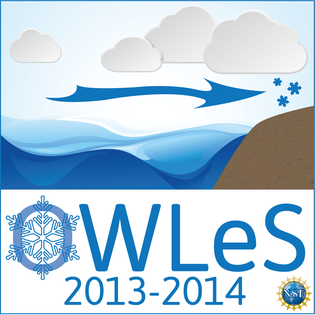 W
WThe Ontario Winter Lake-effect Systems (OWLeS) was a field project focused on three modes of lake-effect snow: Short-fetch, long-fetch, and downstream coastal and orographic effects. The project was conducted along Lake Ontario in the Great Lakes region and in the Finger Lakes region of upstate New York. OWLeS occurred in two field phases, one in December 2013 and another in January 2014. The project is a collaborative effort of nine universities and the Center for Severe Weather Research and is funded by the National Science Foundation (NSF).
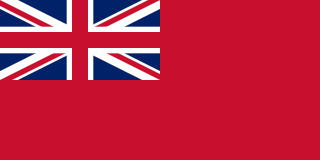 W
WProvincial Marine was a coastal protection service in charge of the waters in the Great Lakes, the St. Lawrence River and parts of Lake Champlain under British control. While ships of the Provincial Marine were designated HMS, they were operated in more of a coast guard manner than as a full-fledged navy. Operations were maintained and staffed by the Royal Navy. Most ships of the Provincial Marine were built on the Great Lakes.
 W
WThe Great Lakes region of North America is a bi-national Canadian–American region that includes portions of the eight U.S. states of Illinois, Indiana, Michigan, Minnesota, New York, Ohio, Pennsylvania and Wisconsin as well as the Canadian province of Ontario. Quebec is at times included as part of the region because, although it is not in a Great Lake watershed, it is in the St. Lawrence watershed which is part of a continuous hydrologic system that includes the Great Lakes and eventually discharges into the Atlantic Ocean. The region centers on the Great Lakes and forms a distinctive historical, economic, and cultural identity. A portion of the region also encompasses the Great Lakes Megalopolis.
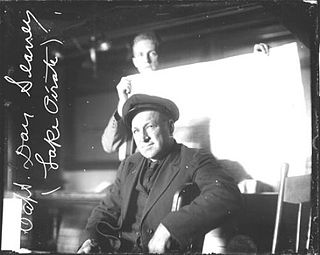 W
WDan Seavey, also known as "Roaring" Dan Seavey, was a sailor, fisherman, farmer, saloon keeper, prospector, U.S. marshal, thief, poacher, smuggler, hijacker, human trafficker, and timber pirate in Wisconsin and Michigan and on the Great Lakes in the late-19th to early-20th century.
 W
WLake St. Clair is a freshwater lake that lies between the Canadian province of Ontario and the U.S. state of Michigan. It was named in 1679 by French Catholic explorers after Saint Clare of Assisi, on whose feast day they first sighted this body of water.
 W
WThe Superior Shipbuilding Company was originally called the American Steel Barge Company, and based in Duluth, Minnesota. It was founded by Scottish Captain Alexander McDougall who founded it so he could produce his new whaleback ship, this was Whaleback Barge 101. In 1900 McDougall sold his firm to the American Ship Building Company which transferred the company to Superior, Wisconsin and renamed it Superior Shipbuilding Company. After World War One the yard stopped manufacturing ships and instead turned to repair work. They continued repairing ships until 1945 when American Ship Building Company decided to sell it. It was initially known as the Knudsen Brothers Shipbuilding & Dry Dock Company. In 1955 it was renamed Fraser Shipyards and still exists today.
 W
WIn the United States, a timber pirate is a pirate engaged in the illegal logging industry.
 W
WThe United States Lake Survey (USLS) was a hydrographic survey for the Great Lakes, New York Barge Canal, Lake Champlain and the Boundary Waters of the Canada–United States border between Minnesota and Ontario. The Survey's activities began on 31 March 1841, with the goal of surveying the Great Lakes. The Lake Survey was created within the United States Army Topographical Engineers. Like the Commerce Department's Coast and Geodetic Survey, the Lake Survey had responsibility for the preparation and publication of nautical charts and other navigational aids. By 1882, the Survey had completed the original Congressional mandate, producing 76 charts, then disbanded. By 1901, the original survey and charting products required revision. The Lake Survey was reconstituted and its mission expanded. In addition to traditional survey, charting, and navigation information responsibilities, the Lake Survey was also responsible for studies on lake levels and associated river flow.
 W
WRobert Wilson was a Great Lakes ship captain operating out of Oakville, Ontario who helped black slaves escape to freedom as part of the Underground Railroad.